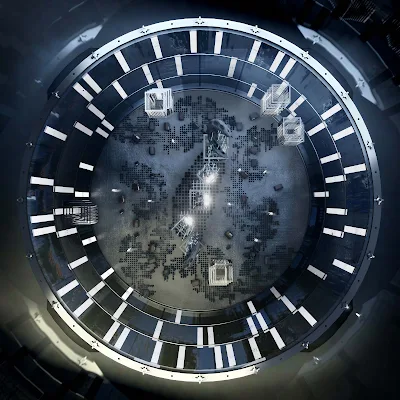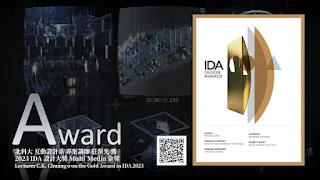這件藝術作品來自於生成式AI-dufussion model對藝術家的啟發。在 “雜訊地景”中,藝術家將AI視為一個共創者,讓它解讀他影像作品中“來自土地的雜訊”,並透過降噪的原理,進一步詮釋其背後的意義。
藝術家首先使用了3D工具來幾何化台灣島的地形地貌;並在6都的位置添加了五個不斷說話、變形的人臉;這是一個心象的裝置,以超現實的手法表現在島上不斷出現的各種社會雜音。此外為了表現“雜訊”的視覺意象,藝術家在每個物件、人臉、以至於幾何運動上,都表現了“glitch”的效果,以作為對核心概念的呼應。整合以上的手法,打造出一個超現實的台灣風景錄像。
第二步便是讓AI再造影像-如同AI透過Denoise的方式去推測出最終圖像,藝術家希望AI也能透過降噪的原理,看到視覺背後隱藏的事物。他透過ChatGPT產生兩岸關係、社會事件、科技經濟等面向的關鍵標題,然後將這些標題作為提示詞(prompts)丟入圖形AI中,以圖生圖的方式產生一系列的偽新聞影像。這些影像是由CG錄像裡、從人造表象中再次生成的二次創作-包括了戰爭、社運、疫情和科技等等場景。這些影像無需精確,是為 “AI的台灣印象”。最後藝術家將這些prompts再次以ChatGPT轉換為數百字的文稿,並以多種語言的電子音朗讀,以呈現多元的"雜訊"效果。
這件作品最主要的部份就此完成了-新嘗試是將藝術家感受到的“現實雜音”,以人類大腦黑盒轉成一個CG裝置;之後將AI當成是它者去解讀人造影像的內在;當它幫我們將龐雜的外在降噪(Denoise)後,看到的是甚麼? 這就是這件作品的核心價值了。
This artwork was inspired by a generative AI-diffusion model. In "Noisy Landscapes," the artist viewed AI as a co-creator, interpreting "noise from the land" in his visual works and using denoising principles to further interpret their meanings.
The artist first used 3D tools to geometrically represent the topography of Taiwan, adding five talking and deforming faces at the six major cities as a surreal device to express various social noises occurring on the island. Additionally, the artist applied glitch effects to every object, face, and geometric motion to represent the visual image of "noise" as a nod to the core concept.
Next, the artist employed AI to reconstruct the image, hoping that the AI could see what was hidden behind the visual images through denoising principles. The artist used ChatGPT to generate key titles in areas such as cross-strait relations, social events, and technology and economy, which were then used as prompts to generate a series of fake news images in a graphic AI. These images were created from the CG video and secondarily generated from artificial images, including scenes of war, social movements, epidemics, and technology.
Finally, the artist re-transformed these prompts into a multi-lingual electronic voice reading of hundreds of words to present a diverse "noise" effect. The main innovation of this work lies in transforming the "real noise" perceived by the artist into a CG device via the black box of the human brain, using AI to interpret the internal of artificial images. What do we see when it denoises the external complexity? This is the core value of this work.
-----------------------------------------------------------
<Rendering>
-----------------------------------------------------------
<Graphic Design>
-----------------------------------------------------------
<Video Art>
-----------------------------------------------------------
<Exhibition_桃源美展_2023_入選獎>
<Exhibition_LAFA_2023_最佳實驗電影/ IDA設計大獎金獎>
<Exhibition_新北市美術家聯展_2024_邀請展>















